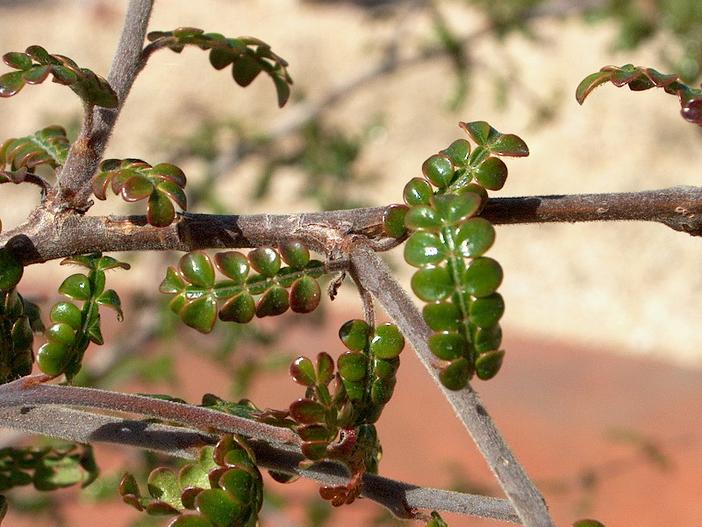Elephant Tree
(Operculicarya decaryi)
Elephant Tree (Operculicarya decaryi)
/
/

The Fun Chronicles
CC0 1.0
Image By:
The Fun Chronicles
Recorded By:
Copyright:
CC0 1.0
Copyright Notice:
Photo by: The Fun Chronicles | License Type: CC0 1.0 | License URL: https://creativecommons.org/publicdomain/zero/1.0/ | Uploader: The Fun Chronicles | Publisher: Flickr

















Estimated Native Range
Summary
Operculicarya decaryi, commonly known as Elephant Tree, is a deciduous or semi-deciduous succulent native to the dry deciduous forests and rocky outcrops of Madagascar. It can grow as a tree or shrub, with a thick, swollen stem that serves as a water reservoir. The Elephant Tree typically reaches a modest height of 6-10 feet (1.8-3 meters) in cultivation, with a similar spread. Its small, red flowers, less than 2 mm in size, bloom in winter and are arranged in inflorescences at the ends of short branches, usually consisting of about five flowers. Although not particularly showy, the flowers are interesting upon close inspection.
The Elephant Tree is valued for its unique, sculptural form and its ability to withstand drought, making it a popular choice for xeriscaping and as a potted specimen in rock gardens or desert-themed landscapes. It requires minimal maintenance once established. In cultivation, it thrives in full sun to part shade and prefers well-draining soil. While it is drought-tolerant, it benefits from moderate watering, especially during the growing season. It is sensitive to frost and must be protected from freezing conditions. Propagation is typically done through woody cuttings or pieces of the tuberous roots, with the soil mixture kept uniformly moist until rooting occurs.CC BY-SA 4.0
The Elephant Tree is valued for its unique, sculptural form and its ability to withstand drought, making it a popular choice for xeriscaping and as a potted specimen in rock gardens or desert-themed landscapes. It requires minimal maintenance once established. In cultivation, it thrives in full sun to part shade and prefers well-draining soil. While it is drought-tolerant, it benefits from moderate watering, especially during the growing season. It is sensitive to frost and must be protected from freezing conditions. Propagation is typically done through woody cuttings or pieces of the tuberous roots, with the soil mixture kept uniformly moist until rooting occurs.CC BY-SA 4.0
Plant Description
- Plant Type: Tree, Succulent
- Height: 15-30 feet
- Width: 15-30 feet
- Growth Rate: Slow
- Flower Color: N/A
- Flowering Season: Winter
- Leaf Retention: Deciduous, Semi-Deciduous
Growth Requirements
- Sun: Full Sun, Part Shade
- Water: Medium
- Drainage: Medium, Fast
Common Uses
Low Maintenance, Rock Garden
Natural Habitat
Dry deciduous forests and rocky outcrops of Madagascar
Other Names
Common Names: Jabily
Scientific Names: , Operculicarya decaryi,
GBIF Accepted Name: Operculicarya decaryi H.Perrier